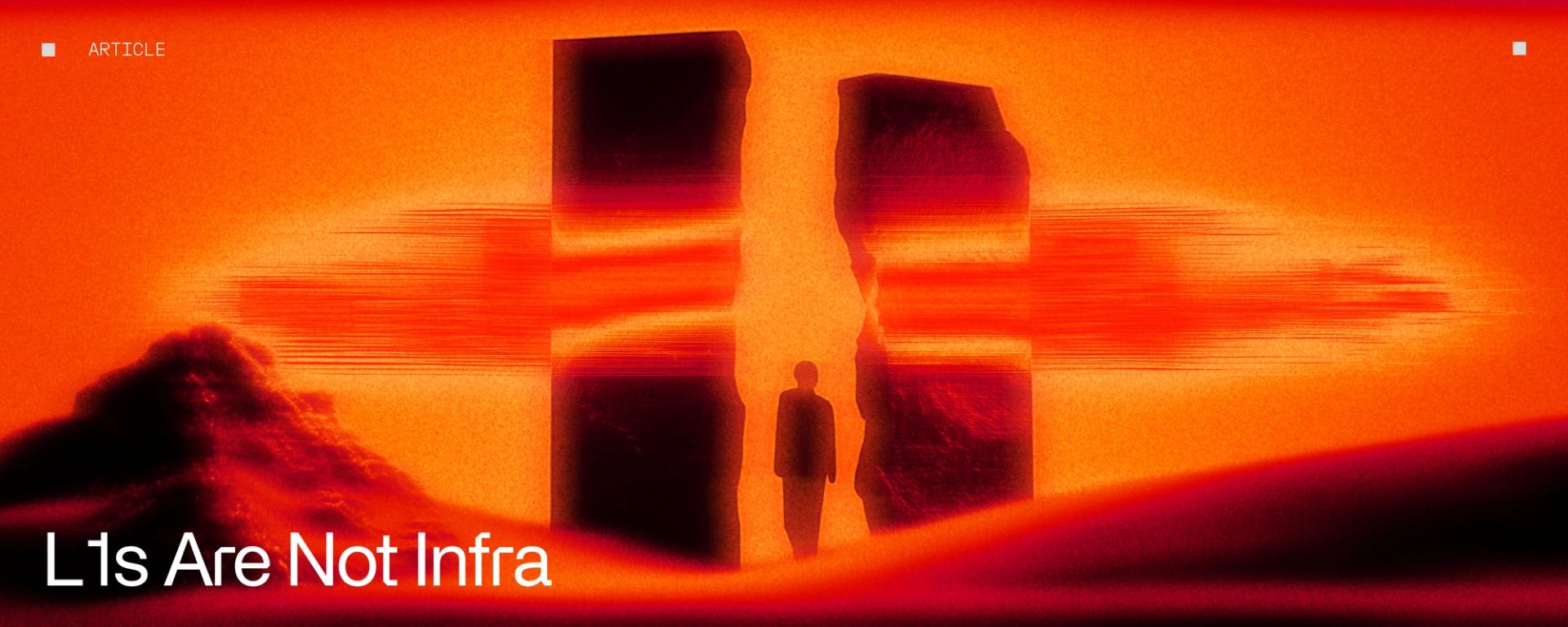 Dima
Dima
L1s keep getting the story wrong. They operate like infrastructure companies, charging per transaction like AWS charges per compute cycle, when they're actually financial networks. The distinction matters because it changes everything: pricing models, product strategy, competitive dynamics.
Financial networks don't win on transaction fees. Visa and Mastercard learned this decades ago. They make money on value-added services, data, and ecosystem products, not on commodity payment processing. Ad exchanges follow the same pattern: the pipes are free; the intelligence layer generates revenue. Yet crypto persists with the AWS model, metering every transaction as if scarcity creates value.
The problem compounds because L1s actually are selling commodity compute. Every chain offers the same basic service: order transactions, execute state changes, achieve consensus. When the core product is identical across competitors, price becomes the only differentiator. Ethereum charges dollars, Avalanche cents, Solana fractions of cents. Each new entrant undercuts the last.
Open source accelerates this commoditization. No technical moat survives when code is public and innovation is forkable. The race to reduce fees becomes a race to reduce revenues. Chains transform into research labs optimizing their own irrelevance, competing to charge less for something the market says should be free.
The structural flaw runs deeper. Power in the ecosystem doesn't sit with chains, it sits with applications. Chains operate one layer removed from users, entirely dependent on app developers for distribution and experience. When Ethereum wants to address MEV, it needs applications to adopt new standards. When Solana wants better UX, it relies on wallets and dApps to deliver it. The infrastructure layer can only influence, never control.
This dependency explains why current L1 economics fail. While chains fight over basis points of transaction fees, the real value flows through applications. DeFi protocols capture trading fees. NFT platforms take marketplace commissions. Games monetize through asset sales. The infrastructure layer, despite enabling everything, captures the least value in the stack.
Making matters worse, the transaction fee model creates perverse incentives. MEV exists because every transaction represents an opportunity for extraction. Priority fees emerge because artificial scarcity makes queue-jumping profitable. Sandwiching thrives because transparency without protection invites predation. The business model doesn't just allow these behaviors, it depends on them.
The path forward requires abandoning the infrastructure mindset entirely. L1s need to become financial networks in practice, not just in theory. This means owning the full stack, from protocol to product.
The precedent exists across tech. OpenAI built ChatGPT rather than remaining an API provider. Amazon operates both Amazon and sells Amazon Basics products. Apple creates first-party apps that define iOS. Vertical integration isn't about control, it's about ensuring quality and capturing value where it actually accrues.
For L1s, vertical integration means building flagship applications that showcase what the network enables. Not infrastructure hoping for adoption, but products that generate flows. The trading venue matters more than the settlement layer. The payment experience matters more than the consensus mechanism.
The application matters more than the state machine running it. This shift demands different priorities. Instead of optimizing for theoretical decentralization metrics, optimize for user outcomes. Instead of competing on transaction throughput, compete on application quality. Instead of subsidizing mercenary developers with grants, build or incubate teams aligned through revenue sharing.
The metrics change accordingly. Transaction count and fee revenue become secondary to user retention, flow concentration, and ecosystem value capture. Success means applications choose the network not because fees are marginally lower, but because the integrated experience is substantially better.
The permissionless dream needs rethinking too. Quality beats quantity when developer talent is scarce. One exceptional native application that compounds network effects outweighs dozens of forks that fragment liquidity. Better to launch with three world-class products than thirty mediocre ones. Permissioned ecosystems can enforce standards, align incentives, and ensure every application strengthens rather than dilutes the network. Curation isn't censorship, it's quality control.
The endgame is predictable. Transaction fees approach zero, the natural price for commodity computation. Chains compete on the products and experiences they enable, not the pipes they provide. Winners capture value through applications while making the infrastructure invisible. The best infrastructure is the kind users never think about.
At N1, this thesis drives everything. The chain and its first applications are being built as one cohesive system. Every launch app is incubated or developed in-house, with revenue sharing aligning all participants. N1 will remain permissioned until critical mass is reached. Quality over quantity, depth over breadth. The goal: near-zero transaction fees, MEV-resistant architecture, and applications that make the network indispensable.
Stop selling infrastructure. Start building networks that generate and capture flows.
The old model is dying. The question isn't whether fees go to zero, it's who builds what comes next.